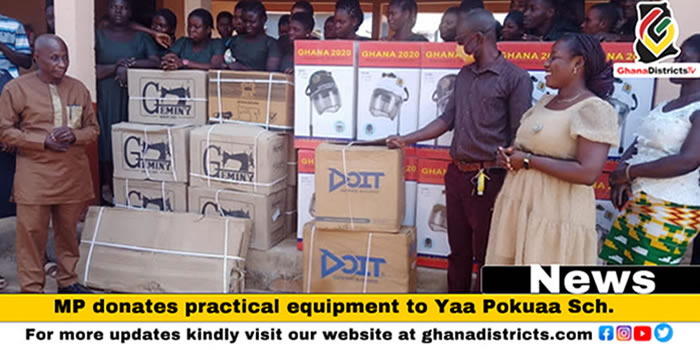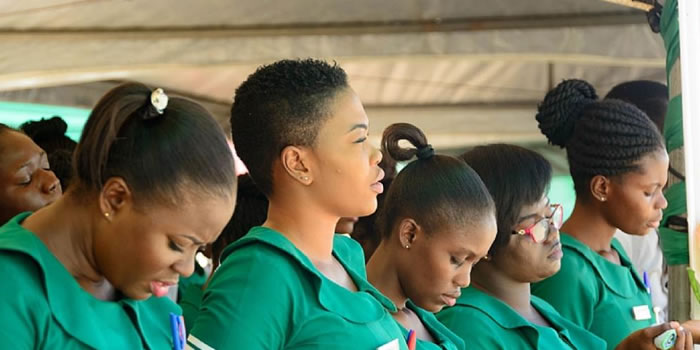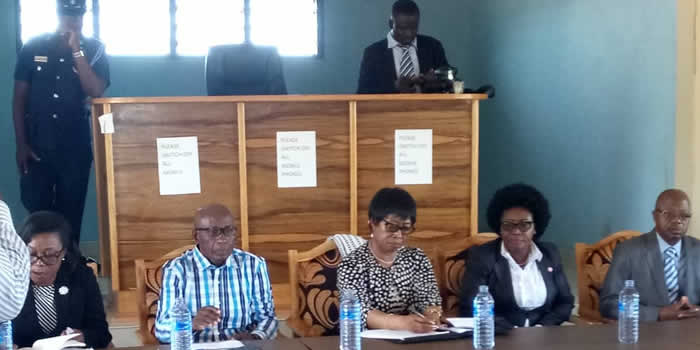

Primary Production
Agriculture is the main economic activity in the district. Over 80% of the active population in the district is farmers. Out of this figure, the youth constitute about 65%. Aqua culture is done on a limited scale whilst there is a moderate livestock production which is basically on free range. Local Poultry rearing is the most dominant activity done in the district. Almost every household is engaged into local poultry rearing. However, keeping of exotic and hybrid poultry is done on a limited scale.
Food Security
Most of the land in the district is put under food crop production each year. Large tracks of fertile lands also remain uncultivated. The major crops cultivated are maize, plantain, cassava, yam and vegetables. Cocoa and cashew production in the district are low and are the only exportable commodities.
Pro-Poor Programs
Based on the Poverty Profiling and Mapping Exercises, key poverty issues and problems were identified under GPRS I, revised under GPRS II and the GSGDA 2010-2013 and currently the generation of the DMTDP 2014 - 2017. Stemming from these exercises, some interventions were suggested to address these issues. Table 12 outlines the thematic areas, target groups and pro-poor interventions.
Livestock production in the district is mainly free range especially, with the small ruminants. Cattle production however could be said to be semi-intensive. Farmers receive veterinary services from the District Directorate.
Rainfall patterns and its effect on agriculture in the district
More rain days were recorded in the second quarter of 2017 compared to same period in 2016. An average of 35 rain days was recorded as compared to 14 rain days in same period of 2016. Rainfall distribution has been even in all operational areas of the district. Its intensity has been moderate with little adverse effect on crops. The overall effect of rainfall on major season’s agricultural output was very good.
Indicators of the rainfall regime during the second quarter of 2017;
1) There was a good growth of vegetation in the district during the period which also means there was enough pasture for livestock to feed on.
2) Most crops performed well during the period. However maize fields were intensely affected by the Fall Army Worm pests which had significantly negative impact on crop yield. Farmers had to incur additional cost to fight the invasion of these pests. The invasion during the period covered over 1800 acres of farmlands in the district.
External factors which affected agriculture
Prices of agro inputs were fairly stable. The government’s fertilizer subsidy program and planting for food and jobs have brought significant cost savings to most farmers.
The threat of activities of alien herdsmen on farmlands has also subsided in recent times. Illegal activities of Chain-saw operators still continue on farms, villages and forest reserves. This will adversely affect rainfall regimes in the future if unchecked.
FOOD PRICES AND FOOD SITUATION
There was an average increase of 20% in food prices during the period as compared to same period in 2016. Maize prices shot up significantly with an increase of 43% over the period.
• Irrigation Schemes
The Akomadan Irrigation Scheme has a potential cultivable area of about 1,000 hectares. However, only 76 hectares have been put under cultivation. Repair works on the dam have been completed by the IDA and an Indian Company with some support from the District Assembly.
It is hoped that it would create employment for the youth during the dry season when it is expected to resume production.
There is another irrigation scheme at Asuoso with a cultivable area of about 25 acres. It is a small dugout and water is drawn for irrigation by the use of a water pumping machine. It is used for vegetable and rice cultivation by the people of the community. It is used all year round.
• Cocoa Production
Cocoa production is not widespread in the district. It is concentrated in areas such as Akrofoa, Tanokwaem, Seseko, Nkenkaasu and Akumadan. Production levels are not very high, but could be boosted with the necessary interventions.
Cocoa farmers receive government support through the Cocoa Pests and Disease Control Programs (CODAPEC) where their farms are sprayed free of charge. Again cocoa fertilizers have been subsidized by the government making it quite affordable to farmers.
The ministry could intervene by introducing a facility that could assist the farmers to acquire the palm oil extraction machinery. At the moment, there is no direct support for oil palm farmers in the district. However, farmers regularly receive extension advice from the Directorate.
• Oil Palm Production
About 1200Ha of land is estimated to be under oil palm production. Oil palm production is still lucrative and receiving quite a good patronage. Lack of processing machinery appears to be the
major challenge faced especially by farmers who could be described as medium scale farmers.
• Citrus Production
About 376Ha of land is estimated to be under citrus production in the district. Fruiting in the inland savannah is becoming a problem so farmers are being advised to go into oil palm production.
• Cashew Production
About 800Ha is being estimated to be under cashew production in the district. The greater percentage of the cashew production is concentrated at the Nsenoa area. Technoserve and ADRA, both NGOs, were very instrumental in promoting the production and marketing of the cashew. At the moment there is no direct involvement by any NGO in the cashew production in the district and some farmers have abandoned their farms. Area under production used to be around 1200 hectares some five (5) years ago.
• Agricultural Extension Services
Agricultural Extension Services are provided for farmers in the district, but at the moment there are a lot of challenges. These challenges have to do with staff strength, staff mobility and staff accommodation.
However, the major and most important challenge lies with the collection of baseline agricultural data for the district. For a reliable data on agricultural production therefore the District Assembly should assist the District Directorate for its collection.
• Manufacturing and Processing
Table Top Milling
There are about three (3) table milling businesses in the district two (2) in Akomadan, and one (1) in Nkenkaasu). There used to be two (2) large saw mill companies operating at Nkenkaasu, but they have folded up as a result of the exhaustion of their concessions.
Agro-Based Industries
Agro-processing in the district is the areas of gari –processing, palm oil and palm kernel extraction. Gari-processing is carried out in communities such as Dwenedabi, Mantukwa, Brohoma and Tanokwaem.
The people of Dwenedabi have been assisted by the UNDP/A2000N to procure a gari-processing plant. This would enable them stepped up production to raise their income levels as well as create employment.
Textiles
Tie and dye production is done in Akomadan. There are a number of tailors and seamstresses in the district. There are a few people who are engaged in the sale of smocks and Kente.
Brewery
Pito brewing also occurs at Akomadan, Afrancho, Nkenkaasu and the Nsenoa area. Distilling of akpeteshie [a locally distilled hard liquor) is carried out around Afrancho, Tanokwaem and Nkenkaasu. These are owned by individuals. They meet the demand in and outside the district.
Sand winning
Sand winning is carried out in communities such as Akomadan and Darso. As an infant district it is carried out on a small scale.
Soap Production
There are a few individuals who are into soap making, but these are rather on a small scale.
Mushroom Production
Oyster mushroom production is also being carried out by an individual at Akomadan. The business however requires support to develop it into a training centre where the youth in the district could be trained on vegetables cultivation especially oyster mushrooms.
Snail Production
Snail rearing is done on a very small scale by some individuals at Afrancho. This activity has however not been very productive due to unfavorable climatic conditions which have adverse effects on the reproduction of the snails and low technical know-how.
Grass cutter Rearing
Grass cutter rearing is mainly practiced in Afrancho. This activity has not been lucrative, because of high mortality rate of the animals. This is so because the locals have low knowledge in grass cutter rearing.
DISTRICT POTENTIALS FOR ONE DISTRICT, ONE FACTORY POLICY
The Offinso North district has a number of potentials with regard to the central government’s “One District, One factory” policy initiative. The district is endowed with irrigation schemes which can be taken advantage of to improve upon the production yields of major crops such as oil palm production, cashew production, vegetable production, cereals and legumes production.
Currently the district produces about 13, 409 metric tons of maize covering about 9,578 hectares of land, 10,342 metric tons of yam covering about 739 hectares of land, 500 metric tons of cashew covering about 800 hectares of land, 98,899 metric tons of cassava covering about 5, 656 hectares of land, 5,856 metric tons of vegetables covering about 1,300 hectares of land etc. (District Agriculture Development Unit, 2017).
From the above information, it is deduced that the district attains high production levels with regards to maize, cassava, yam, cashew and vegetables. The big challenge however has been to adequately add value to these crops to improve the shelve lives and market value as well as creating adequate market opportunities. The three most highly produced crops that could be considered under the “One District, one factory” policy initiative are maize, cassava and tomato.
Date Created : 11/2/2018 7:30:40 AM











 facebook
facebook
 twitter
twitter
 Youtube
Youtube
 +233 593 831 280
+233 593 831 280 0800 430 430
0800 430 430 GPS: GE-231-4383
GPS: GE-231-4383 info@ghanadistricts.com
info@ghanadistricts.com Box GP1044, Accra, Ghana
Box GP1044, Accra, Ghana